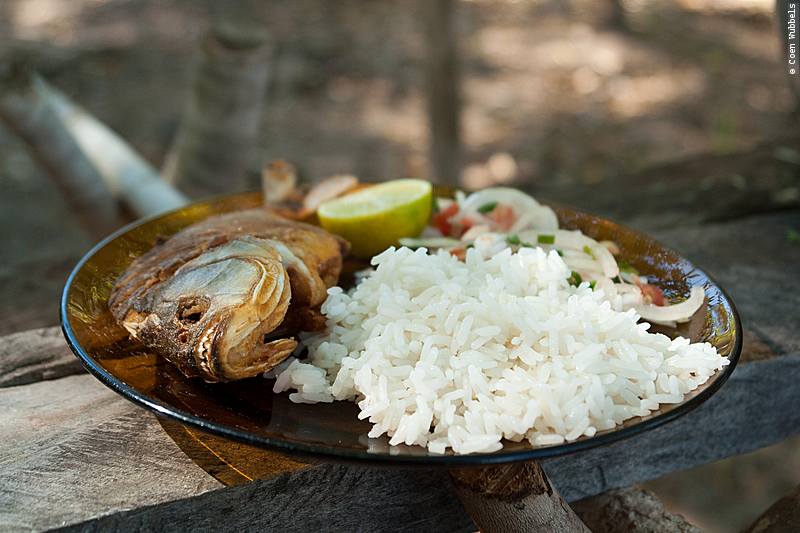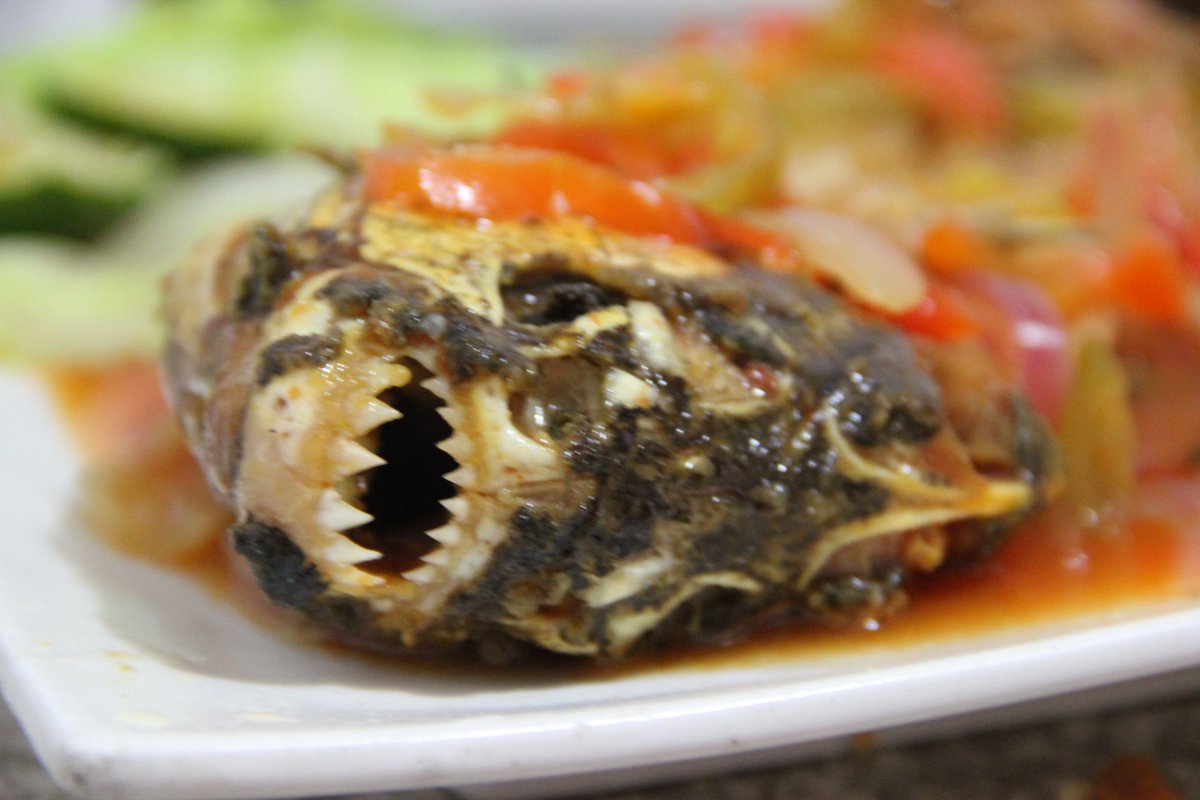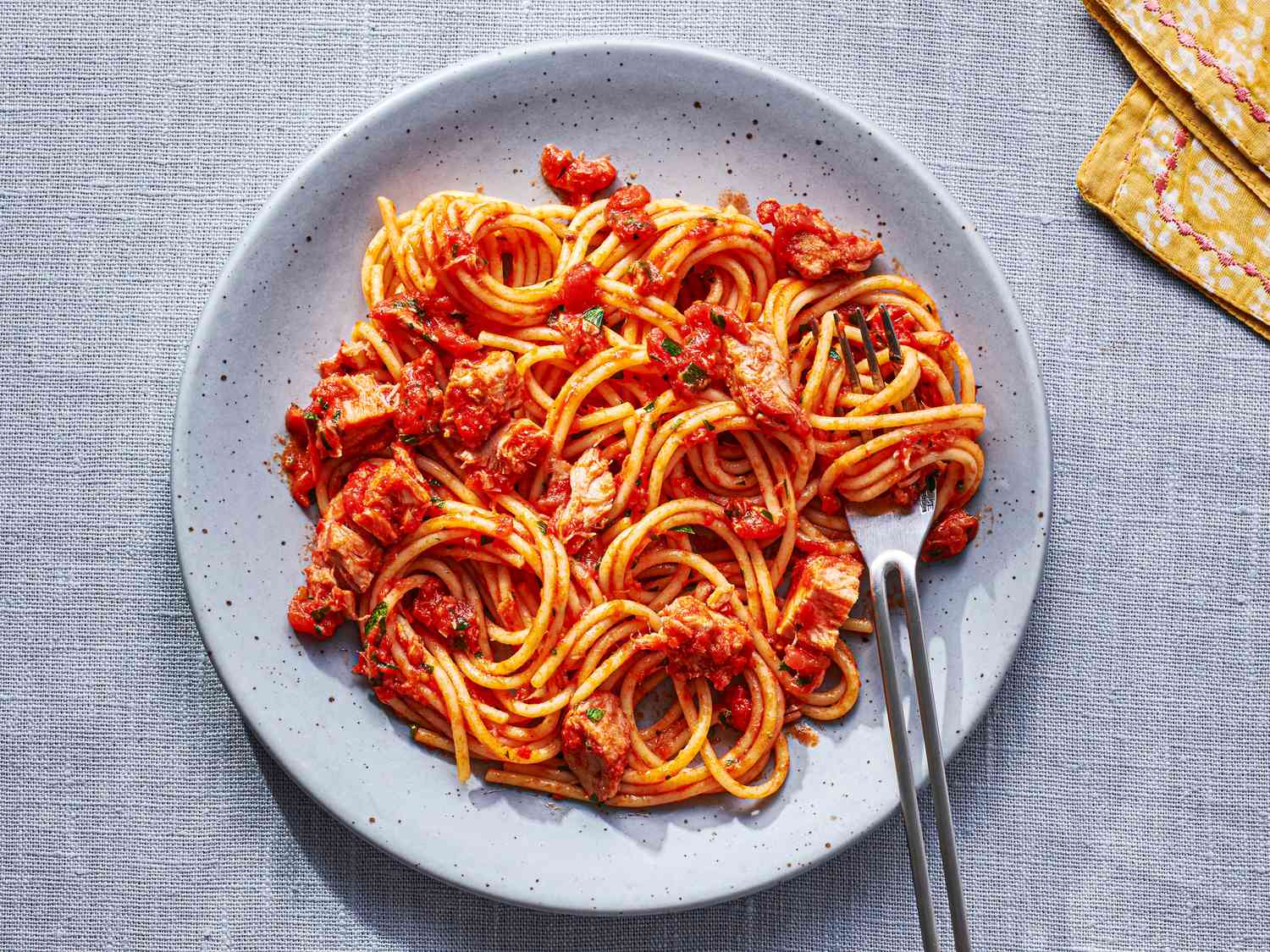Yes, you can eat piranha, but there are some important things to consider. Piranha is a nutritious fish, and people often prepare it by boiling, frying, grilling, or even eating it raw. However, be cautious about the tiny, needle-like bones—they require careful removal before consumption.
Despite their sharp teeth, piranhas are not as dangerous as portrayed. They typically scavenge and may only attack if threatened or hungry. It’s necessary to eat piranhas in moderation due to their high mercury content, especially for pregnant or nursing women, as excessive consumption can lead to health issues.
What Are The Nutritional Benefits Of Piranha?
Piranha, the celebrated freshwater fish, not only holds cultural significance but also possesses a noteworthy nutritional profile, making it a valuable and versatile food source.
Protein Content
Piranha stands out as a rich source of high-quality protein, essential for the body’s fundamental functions. Protein is integral to muscle development, tissue repair, and the synthesis of enzymes and hormones.
The inclusion of piranha in one’s diet can contribute significantly to meeting daily protein requirements, especially for individuals focused on maintaining or building lean muscle mass.
Healthy Fats and Omega-3 Fatty Acids
In addition to protein, piranha contains healthy fats, including omega-3 fatty acids. These essential fats play a vital role in cardiovascular health, aiding in reducing inflammation, lowering blood pressure, and potentially mitigating the risk of chronic diseases. The omega-3 fatty acids found in piranha contribute to a well-balanced diet, supporting overall well-being.
Micronutrients
Piranha is not just a protein and fat source rather it also offers a spectrum of essential micronutrients. These include vitamins such as B-complex vitamins, which play a role in energy metabolism, and minerals like phosphorus, essential for bone health. The specific micronutrient composition can vary based on the species, habitat, and diet of the piranha, adding to its nutritional diversity.
What Are The Precautions In Consuming Piranha?

Learn about the potential hazards associated with tiny, needle-like bones and the importance of thorough bone removal before consumption
Emphasizing the Presence of Tiny, Needle-Like Bones
Abundance of Small Bones: Piranhas are characterized by an abundance of tiny, needle-like bones distributed throughout their flesh. These bones can be challenging to detect and require careful attention during the preparation and consumption process.
Risk of Choking Hazard: The small size and often transparent nature of piranha bones pose a potential choking hazard. Emphasize the need for caution while eating to avoid accidental ingestion of these small bones, particularly for individuals who might not be accustomed to such nuances in fish anatomy.
Focus on Inspection: Before cooking, visually inspect the piranha thoroughly for tiny bones. Run your fingers along the flesh to identify and locate any hidden bones. This meticulous examination is crucial to ensuring a safe dining experience.
Importance of Thoroughly Removing Bones Before Eating
Preventive Measures During Filleting: When filleting piranha, employ a meticulous approach to ensure the removal of all bones. Concentrate on areas near the spine and ribs, where these tiny bones are concentrated. Utilize specialized tools, such as fish tweezers or filleting knives, for precise and effective bone removal.
Cooking Techniques for Bone Detection: Go for cooking methods that facilitate easy bone detection and removal. Grilling, baking, or pan-frying can make bones more visible and allow for their removal before serving. This not only enhances safety but also ensures an uninterrupted dining experience.
Educating Diners on Bone Awareness: Communicate the presence of tiny bones to those partaking in the meal. Encourage diners to be vigilant and chew their food carefully, emphasizing the importance of bone detection before swallowing. This proactive approach ensures that everyone is aware and takes necessary precautions.
Consideration for Vulnerable Groups: Exercise heightened caution when serving piranha to children or individuals with dental issues. These groups may be more susceptible to choking or accidental ingestion of small bones. Pre-emptively remove bones or provide guidance for safer consumption.
Supervision for Raw Consumption: If consuming piranha raw, the importance of bone removal becomes even more critical. Ensure that the fish is meticulously filleted to eliminate all bones, reducing the risk associated with raw consumption.
Enhancing the Dining Experience: Thorough bone removal not only contributes to safety but also enhances the overall dining experience. By taking the time to eliminate bones, diners can focus on savoring the unique flavors and textures of piranha without concerns about inadvertent bone ingestion.
How does mercury in piranhas affect health, especially for pregnant and nursing women?
Higher Mercury Content in Piranha
Predatory Nature and Bioaccumulation: Piranhas, as predatory fish, have a higher likelihood of containing mercury due to the process of bioaccumulation. Mercury in water is converted into methylmercury, a highly toxic form, which then accumulates in the tissues of fish as they consume smaller organisms in the food chain.
Mercury Levels Variation: Mercury levels in piranhas can vary based on factors such as the size of the fish, the specific water body they inhabit, and their diet. Larger piranhas tend to accumulate higher levels of mercury due to their longer lifespan and greater consumption of prey.
Environmental Factors: The mercury content in piranhas is influenced by environmental factors, including the presence of industrial pollutants and human activities. Piranhas caught in waters near industrial or mining activities may have elevated mercury levels.
Cautionary Advice, Especially for Pregnant or Nursing Women, Regarding Mercury Intake
Vulnerability of Developing Fetuses and Infants: Mercury is known to have adverse effects on the developing nervous system. Pregnant women, nursing mothers, and young children are particularly vulnerable as the developing fetus and infants may be more sensitive to the neurotoxic effects of mercury.
Potential for Developmental Issues: High levels of mercury intake during pregnancy can lead to developmental issues in the fetus, affecting cognitive function, language skills, and motor coordination. Pregnant women must be cautious about their mercury intake to safeguard the health of the developing child.
Advisory Guidelines: Health organizations, such as the U.S. Environmental Protection Agency (EPA) and the Food and Drug Administration (FDA), provide advisory guidelines regarding fish consumption during pregnancy. These guidelines often recommend limiting the intake of certain fish, including those with higher mercury content, to reduce potential health risks.
Moderation and Diverse Seafood Choices: While caution is advised, complete avoidance of fish may deprive individuals of essential nutrients. Instead, pregnant or nursing women are encouraged to choose a variety of fish with lower mercury levels, ensuring a balance between obtaining nutrients like omega-3 fatty acids and minimizing mercury exposure.
Educational Outreach: Public health campaigns and educational outreach efforts play a crucial role in informing pregnant and nursing women about the risks associated with mercury in fish. These initiatives empower individuals to make informed choices about their diet and prioritize the health of both themselves and their infants.
Consultation with Healthcare Professionals: Pregnant or nursing women should consult with healthcare professionals to assess individual risk factors and receive personalized advice on fish consumption. Healthcare providers can offer tailored guidance based on the woman’s overall health, dietary habits, and potential exposure to environmental contaminants.
FAQ
What does piranha taste like?
Piranha meat is often described as mild and white, similar to other freshwater fish. The taste can vary slightly depending on the piranha species and how it’s prepared.
Can piranhas chew through bone?
No, piranhas cannot chew through bone. While they have strong jaws, their teeth are designed for gripping and tearing flesh, not for crushing bones.
Is Piranha fish harmful?
Piranhas can be harmful due to their sharp teeth and territorial behavior. However, most species are more interested in scavenging than attacking larger animals, including humans.
Can you safely swim with piranhas?
Swimming with piranhas is not recommended. While they are not typically aggressive toward humans, the risk of accidental bites exists, especially in certain situations.
How powerful is a piranha bite?
A piranha bite can be powerful, for its strong jaws and sharp teeth. However, the force of their bite is often exaggerated in popular culture.
How fast can one piranha eat a human?
Contrary to myths, piranhas do not attack and eat humans in a feeding frenzy. Such scenarios are highly unlikely, and piranhas are generally more scavengers than predators of larger animals.
Is piranha bite painful?
Yes, a piranha bite can be painful due to their sharp teeth. However, the severity of the pain depends on the circumstances of the encounter.
What is a piranha’s weakness?
Piranhas are known for their group behavior and sharp teeth, but they have vulnerabilities too. Their relatively small size and sensitivity to environmental changes can be considered weaknesses.
Is a piranha a good pet?
Keeping a piranha as a pet is not recommended. They require specialized care, and their territorial and aggressive nature can make them challenging to handle safely.
Who is a piranha’s enemy?
Piranhas have several natural enemies, including larger fish, birds, and mammals. Crocodiles and caimans are among the predators that pose a threat to piranhas.
What do piranhas fear?
Piranhas exhibit fear in response to larger predators, changes in their environment, and disturbances in their social structure. They are alert animals that rely on group dynamics for protection.
Final words
To sum up, if you want to eat a piranha, be super careful! Tiny bones are tricky, so take them out really well before cooking. Think about your health too, because there might be some mercury in the fish. Whether you grill or fry it, just make sure you’re really careful. Eating a piranha can be fun, but you’ve got to be smart about it. So, remember, take your time, be safe, and enjoy your piranha meal with care!”








